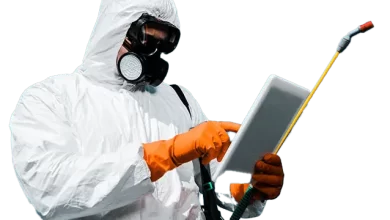What is Involved in BRE 365 Testing?

BRE 365 testing is key to surface water drainage management, especially in sustainable urban drainage systems (SUDS). It’s essential to ensure proposed infiltration devices (soakaways) can manage surface water runoff. This is required by local planning authorities and lead local flood authorities. In this blog we’ll get into the details of what BRE 365 testing involves and its importance in designing natural underground drainage systems.
What is BRE 365 Testing
The BRE 365 test (also known as infiltration testing or percolation testing) is to determine the soil infiltration rate of a site. This rate is key to whether the ground can absorb surface water. BRE 365 testing is usually done during the planning application stage or design stage of a development. The results of the test inform the drainage strategy so surface water management solutions like soakaways are designed and installed correctly.
The BRE 365 Testing Process
- Trial Pit Excavation: The first step in BRE 365 testing is to excavate a trial pit at the proposed location of the infiltration device. The trial pit must be dug to a depth that reflects the intended soakaway or other infiltration device.
- Soil Saturation: Once the trial pit is dug, the soil is saturated with water to simulate heavy rainfall or a storm event. This is to see how much water the soil can absorb and how quickly it can drain.
- Percolation Test: Percolation tests are done by filling the trial pit with water and measuring the time it takes for the water level to drop. This is repeated multiple times to ensure accuracy. The soil’s infiltration rate is then calculated to give an idea of the soil’s ability to absorb surface water.
- Surface Water Management Calculations: Once the infiltration rate is determined, calculations are made to determine the size of the required infiltration device. This is to ensure the device can manage surface water runoff from the site.
The Role of Expert Consultants
When conducting BRE 365 testing and preparing a surface water management strategy, it’s often beneficial to engage experienced environmental consultants like IBEX. They specialise in assessing the suitability of the ground conditions and provide guidance on the design and installation of infiltration devices. Their expertise ensures that the natural underground drainage system is tailored to the specific location and underlying geology, helping developers avoid costly mistakes and ensuring compliance with regulations.
Soil Infiltration Rate
The soil infiltration rate is key to determining if a site is suitable for natural underground drainage systems. If the rate is too slow it means the soil won’t absorb enough water and surface water will flood during heavy rainfall. If the rate is too fast it means the soil is too porous and water will drain too quickly and cause problems for the drainage strategy.
Ground Conditions and Site Layout
The results of BRE 365 testing are also affected by the site geology and ground conditions. Factors such as soil type, water absorption rate and available space on site will impact the effectiveness of surface water networks and SUDS designs.
For example, a site with poor infiltration rates may need other infiltration devices or an alternative drainage strategy to manage surface water. In these cases environmental consultants may be called in to advise on options.
Why BRE 365 Testing is Important for Development
For any development, managing surface water is top priority especially for flood prone areas. Lead local flooding authorities and local planning authorities often request SUDS reports during the planning application process. These reports detail how surface water will be managed and ensure the development proposal meets the BRE regulations.
BRE 365 testing is key to providing the data for these reports. The data is used to design infiltration devices and ensure surface water is drained from the site, reducing the risk of flooding to nearby rivers, drains and homes.
Installed Correctly: Long Term Success
One of the outcomes of the BRE 365 test is to ensure infiltration devices such as soakaways are installed correctly. This means ensuring the devices are in areas where the ground can absorb water. Site layout is also key as factors like space and the location of the proposed soakaway must be considered.
If these devices are not installed correctly they will fail during a storm event and flood and cause water damage. So accurate infiltration testing is critical to prevent this.
Factors Affecting Infiltration Testing Results
Several factors will impact the results of infiltration testing:
- Soil Type: Different soils such as clay, sand or gravel have different infiltration rates. Clay soil has slower infiltration rates, sand soil allows water to drain quicker.
- Ground Conditions: The condition of the ground, including water absorption rate and underlying geology will impact how the soil can handle surface water.
- Heavy Rainfall: Areas that get heavy rainfall may need larger or more complex infiltration devices to cope with excess surface water.
- Development Proposals: The size and scale of the proposed development will also impact the drainage strategy. Larger developments will need multiple infiltration devices to manage surface water runoff.
Environmental Consultants and SUDS Reports
Environmental consultants are key to ensuring BRE 365 testing and surface water management is done in accordance with the regulations. They will advise on the drainage strategy for the development and produce SUDS reports to be submitted to the local planning authority.
These reports will include the infiltration tests, trial pits and the proposed drainage strategy so the local authority have the information they need to approve the development.
Summary
BRE 365 testing is an essential part of the planning and build process for any development with surface water management. It ensures infiltration devices are designed and installed to manage surface water runoff, reduce the risk of flooding and meet local planning authority and BRE regulations.
By testing, calculating infiltration rates and working with environmental consultants developers can ensure their drainage strategy is robust and sustainable, long term flood protection.





